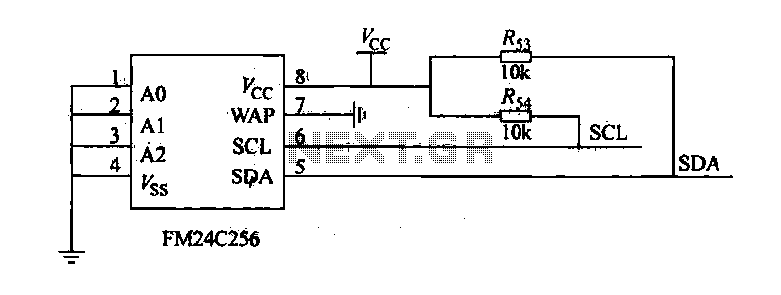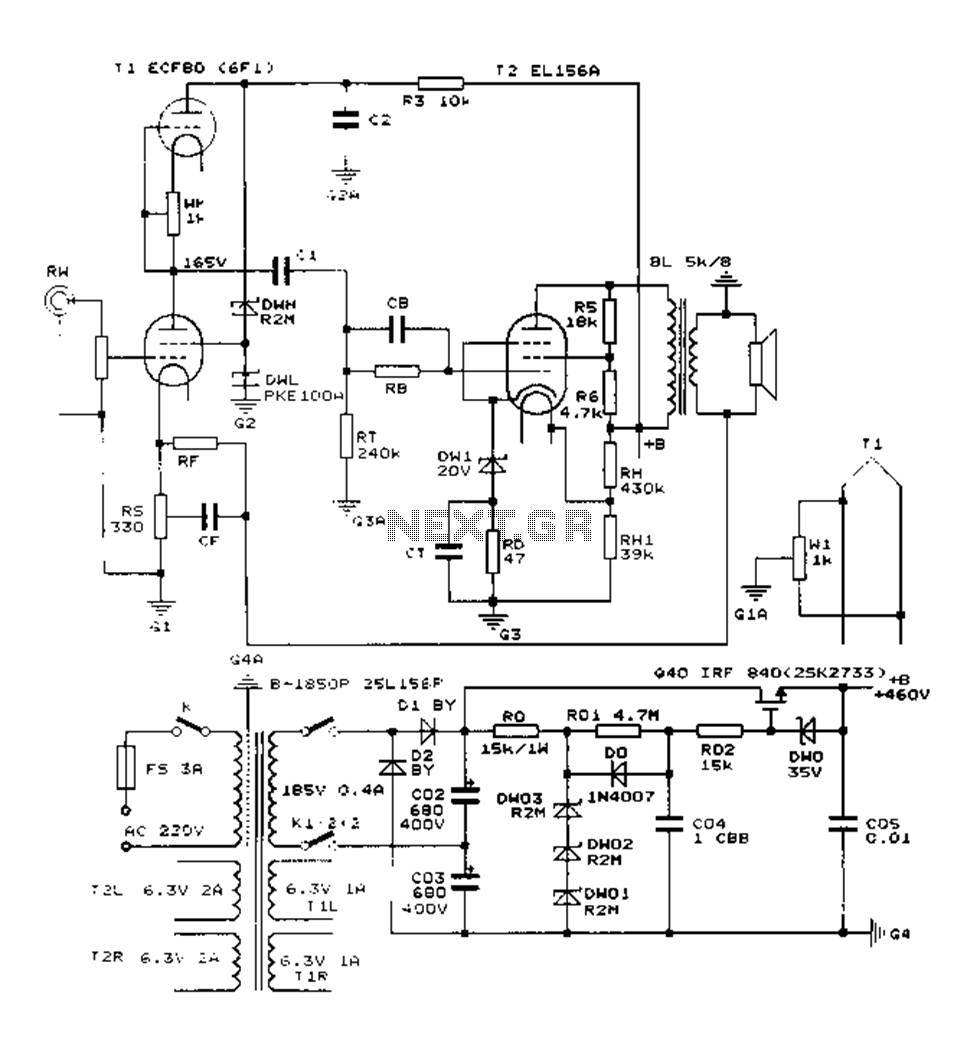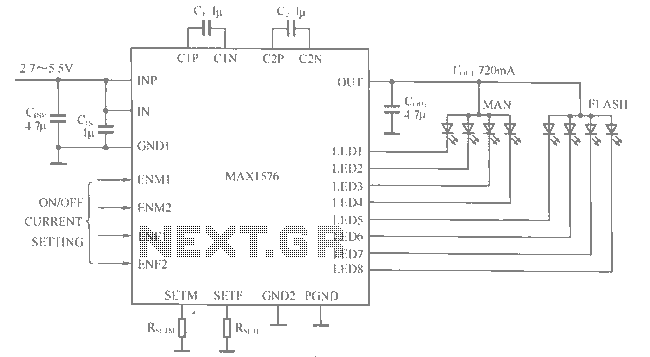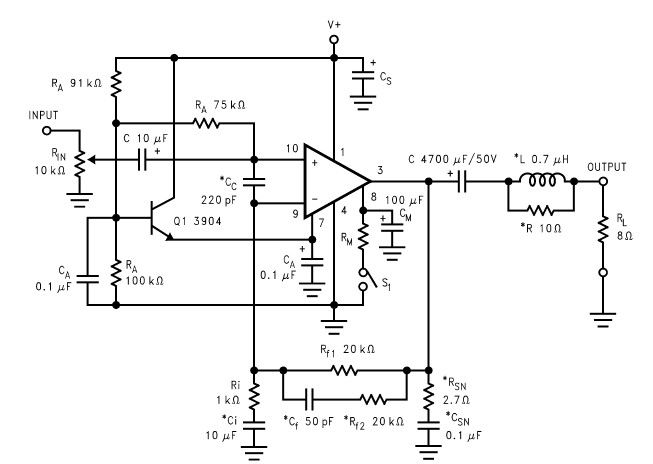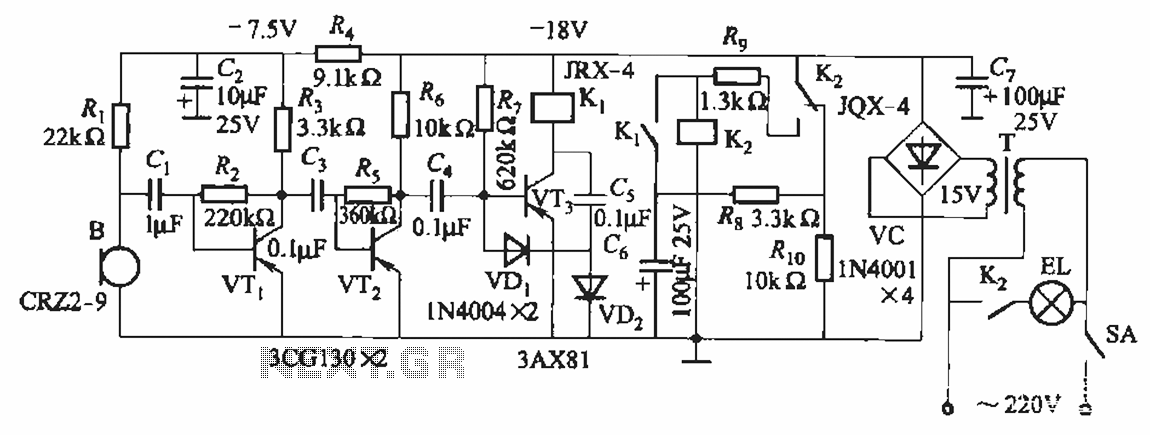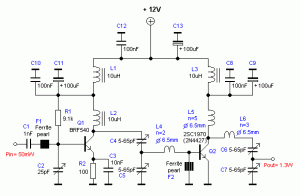
Transistors UHF tuner circuit
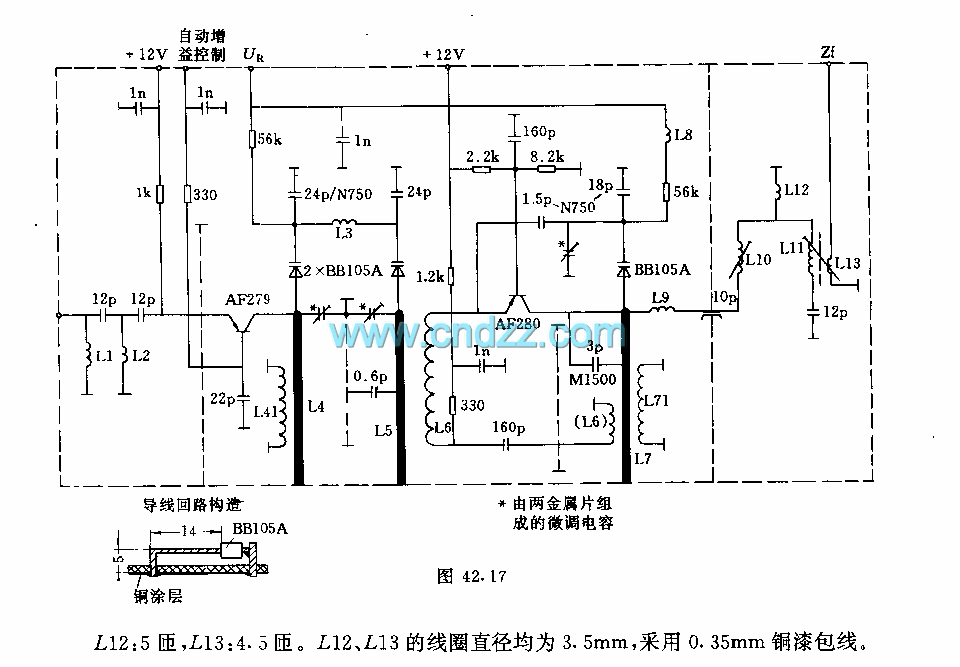
The circuit features an adjustable prestage utilizing the AF279 transistor, while the natural oscillation mixer stage employs the AF280 transistor. The power circuit is mounted on a board with copper coating. The main coil specifications are as follows: L1, L3, L8, and L9 consist of eight turns, constructed using 0.35mm copper enameled wire with a diameter of 3mm; L2 consists of three turns, while L10 and L11 each have fifteen turns.
The circuit design incorporates a key adjustable prestage that enhances signal processing capabilities. The AF279 transistor is selected for its high-frequency performance, enabling efficient amplification of weak signals before they are mixed in the subsequent stage. The natural oscillation mixer stage, utilizing the AF280 transistor, facilitates the combination of the amplified signal with a local oscillator signal, producing an intermediate frequency that can be further processed.
The power circuit's copper-coated board not only provides a robust substrate for the components but also aids in effective thermal management and signal integrity. The choice of eight turns for coils L1, L3, L8, and L9, using 0.35mm copper enameled wire, is critical for achieving the desired inductance values while maintaining physical compactness. The 3mm diameter of the coils allows for adequate spacing and minimizes parasitic capacitance, which can adversely affect circuit performance.
Coil L2, with three turns, is likely designed for a specific function, possibly serving as a coupling or feedback element. Coils L10 and L11, each with fifteen turns, may be configured to enhance selectivity or improve impedance matching within the circuit, contributing to overall efficiency and performance. This configuration of coils is essential for optimizing the circuit's response across its operational frequency range, ensuring reliable and effective signal processing.In the circuit, the adjustable prestage is composed of transistor AF279, and the natural oscillation mixer stage consists of transistor AF280. The power circuit is installed on the board with copper coating. The main coil data:L1, L3, L8, L9: eight turns, the coil uses 0.35mm copper enameled wire with diameter in 3mm;L2 : 3 turns, L10 : 15 turns, L11: 15 tur..
🔗 External reference
The circuit design incorporates a key adjustable prestage that enhances signal processing capabilities. The AF279 transistor is selected for its high-frequency performance, enabling efficient amplification of weak signals before they are mixed in the subsequent stage. The natural oscillation mixer stage, utilizing the AF280 transistor, facilitates the combination of the amplified signal with a local oscillator signal, producing an intermediate frequency that can be further processed.
The power circuit's copper-coated board not only provides a robust substrate for the components but also aids in effective thermal management and signal integrity. The choice of eight turns for coils L1, L3, L8, and L9, using 0.35mm copper enameled wire, is critical for achieving the desired inductance values while maintaining physical compactness. The 3mm diameter of the coils allows for adequate spacing and minimizes parasitic capacitance, which can adversely affect circuit performance.
Coil L2, with three turns, is likely designed for a specific function, possibly serving as a coupling or feedback element. Coils L10 and L11, each with fifteen turns, may be configured to enhance selectivity or improve impedance matching within the circuit, contributing to overall efficiency and performance. This configuration of coils is essential for optimizing the circuit's response across its operational frequency range, ensuring reliable and effective signal processing.In the circuit, the adjustable prestage is composed of transistor AF279, and the natural oscillation mixer stage consists of transistor AF280. The power circuit is installed on the board with copper coating. The main coil data:L1, L3, L8, L9: eight turns, the coil uses 0.35mm copper enameled wire with diameter in 3mm;L2 : 3 turns, L10 : 15 turns, L11: 15 tur..
🔗 External reference
